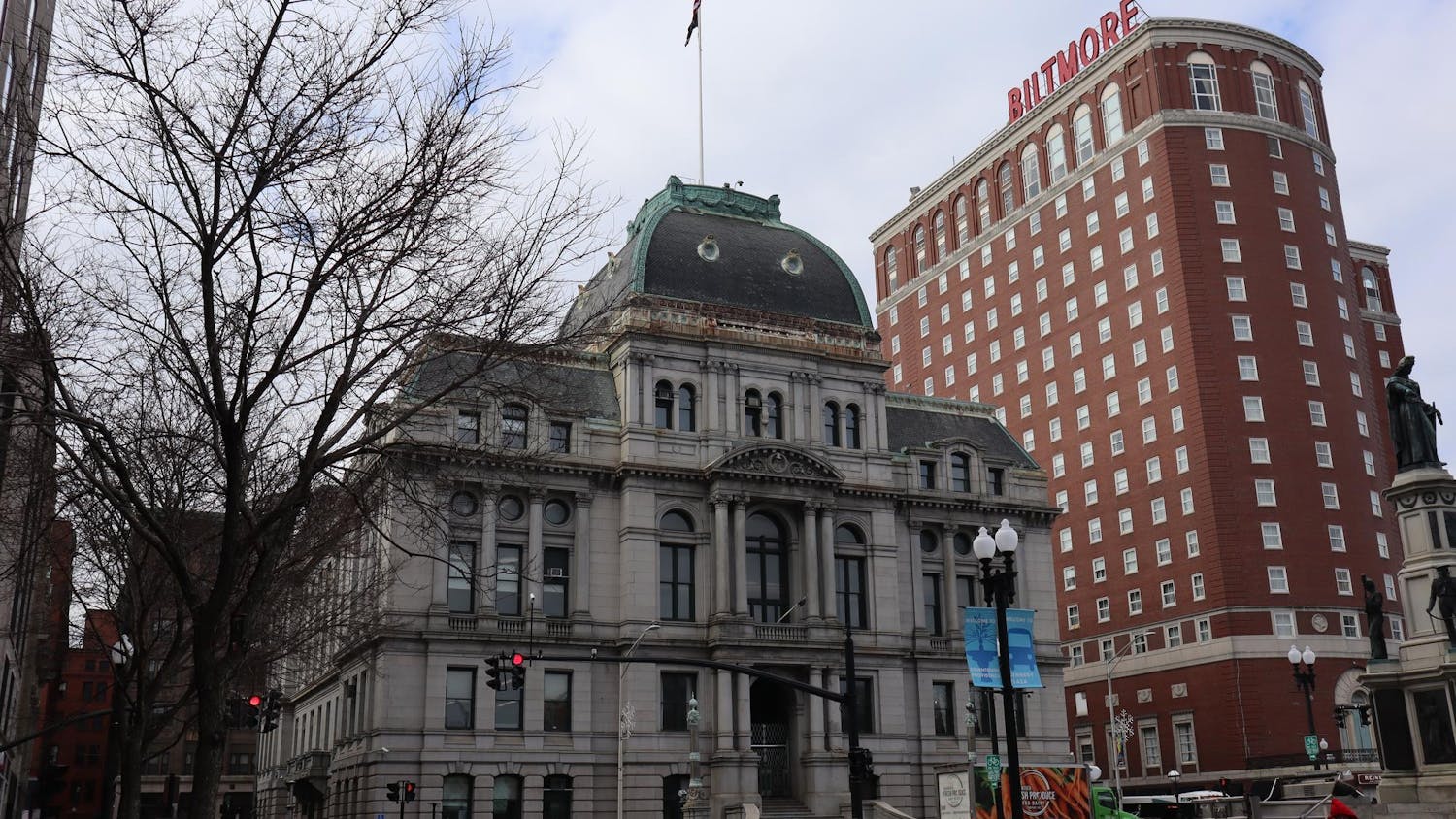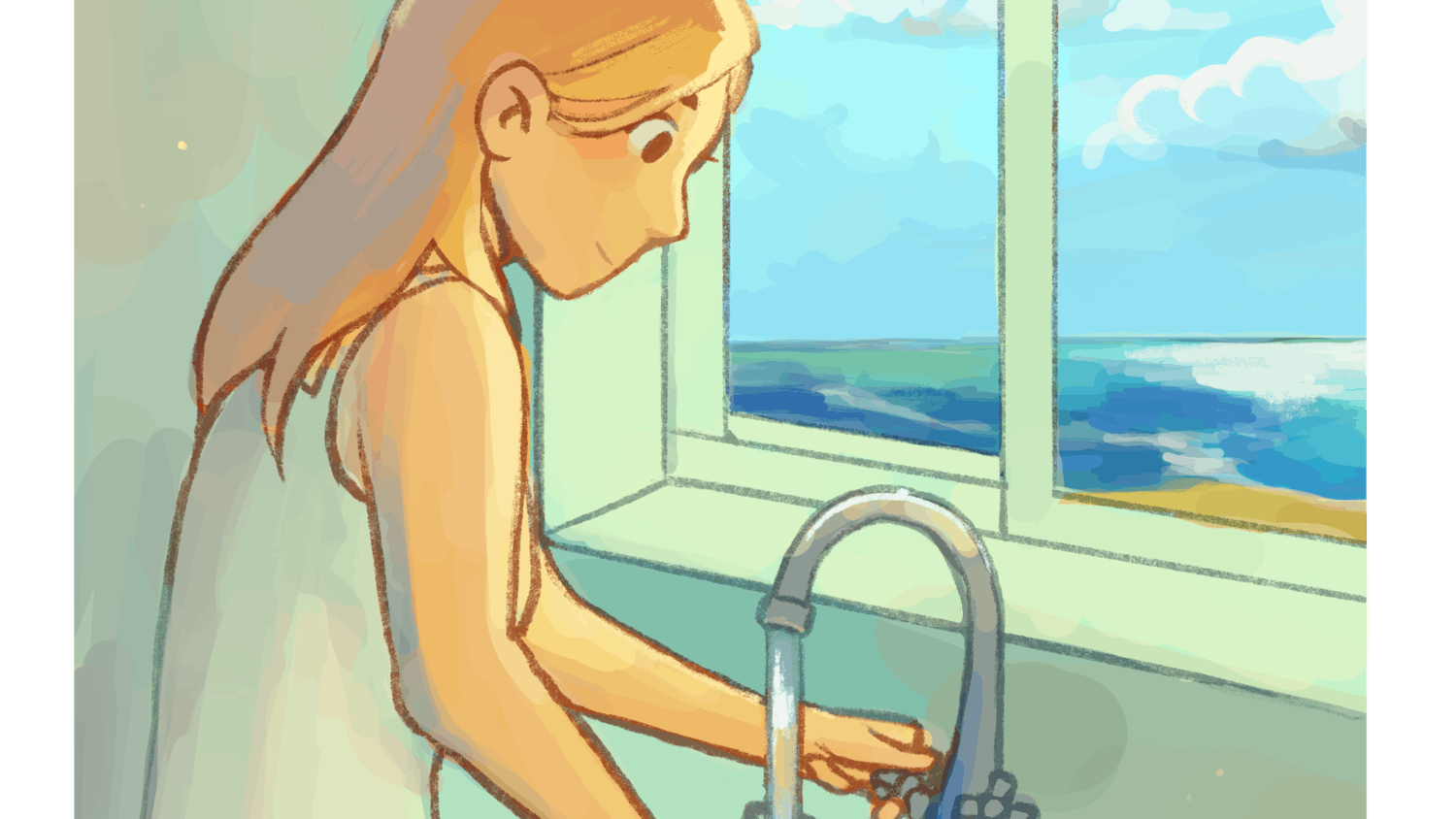Ever wish you could print a three-dimensional object? MakerBot works with software to print 3-D plastic models of 2-D images. There is one MakerBot at AS220 Labs in Providence, two at the Perry and Marty Granoff Center for the Creative Arts and one in the Dunn Lab, a biology lab at the University.
Plastic progeny
AS220 Labs is a 15-minute walk from College Hill. The lab itself is a humming hive of machinery - the first floor houses the ShopBot, a wood-carving machine, and the laser cutter, the vinyl cutter and the MakerBot can be found one flight up.
The MakerBot is "kind of like a robotic hot glue gun," said Labs Manager James Rutter, because a spool of colored plastic feeds into its "extruder," or nozzle and oozes out in molten form.
"It's a pretty easy machine to use. The real hard part is the software," he said, noting that the MakerBot works with the free software program SketchUp. "It's easy to print out a book - you just press a button," Rutter noted. "The hard part is writing it."
The machine is "expensive for an individual but affordable for a community like AS220," Rutter said. MakerBot donated the 3D Printer to AS220.
The upstairs smells subtly of cooking corn oil, because the MakerBot uses polylactic acid, acorn-based and biodegradable plastic. The shelves lining the walls are stocked with the MakerBot's plastic progeny - an owl, a frog, a Darth Vader figurine, busts of real people and even a squirrel the size of a thumb.
Following the scent of corn oil and the trail of plastic models into a side room, visitors can find Lindsay Selin bent over her latest project, sporting a pair of sleek, almond-shaped wooden earrings she made on the ShopBot. Selin is a monitor at AS220 Labs - she volunteers there a couple of hours a week and helps people use the machines in exchange for a lower membership cost.
"To have a studio like this that's available twelve hours a day is fantastic," Selin said. "There's a whole range of things you can do."
AS220 Labs held a workshop Sept. 27 called "Intro to the 3-D Printer (MakerBot Thing-o-Matic)." The class cost $40 and was capped at five people. The second and final workshop will be held Nov. 29 from 7 to 10 p.m.
'The next Steve Jobs'
Meanwhile, at the multimedia lab in the Granoff Center, five Brown students hunch over computer screens. The lab acquired two MakerBots this summer, and the students are learning to use the associated software. The machines can print in almost any color, but the first has one nozzle and currently prints in neon red. The second has two nozzles and prints in blue.
The students are in ENGN 0930: "DesignStudio," a class taught by Ian Gonsher, adjunct lecturer at the School of Engineering. Andrew Goodman, instructural multimedia coordinator for Computing and Information Services, helps the students download and use the software.
Students in this class use tools such as the laser cutter, table saw and MakerBot to make "projects that relate to their own curiosities and interests and things they want to address," Gonsher said. "The students have freedom to interpret the assignments," he added.
Griffin Thompson '16 is using that autonomy to design a building. Not just any building, but the Burj Khalifa - the tallest building in the world. When the Burj Khalifa comes out of the MakerBot, it will have shrunk from almost 3,000 feet to less than five inches tall.
"3-D printing is absolutely the future," Thompson said. "The person who personalizes the MakerBot will be the next Steve Jobs."
Wendy Ginsberg '15, who used the machine to make a frog, also has visions of the MakerBot in the future. "There's nothing like it," Ginsberg said. "Imagine years from now being in your kitchen, drinking from a plastic cup, melting the cup back down, and making something else - all in your home. The MakerBot changes the nature of recycling."
But Nic Schumann '14.5 was less enthusiastic. "I don't think it's that useful. The time is so limiting. It's restricting," he said, referencing the 50 minutes the machine takes to make one object. "In terms of actually producing something, it just takes too long. Maybe in a few years it'll take less time, but now, it's not ready," Schumann added.
Kerri Horvay '14 also expressed doubts about the MakerBot, but for a darker reason. Horvay mentioned an Oct. 7 New York Times article about a law student in Texas who is using a MakerBot to manufacture gun parts. The article scared her into thinking the MakerBot's "benefits would not outweigh the costs," she said
Gonsher's view of the MakerBot is more nuanced - while he recognizes that its technology is currently limited, he said that it has great potential for the future.
"I think it's very similar to how personal computers were in the '70s and '80s. They were very much a hobbyist kind of thing, and you had to know a little to tinker with them, but now everyone has one. I definitely think that's the direction we're going in," he said. "Think about what that does to supply and demand. I don't need to make a million iPhones and put them in the warehouse and hope someone buys them - I can just print them out as I need them!"
Print-off!
Across campus, in the Dunn Lab, students in BIOL 0410: "Invertebrate Zoology" are using a MakerBot to make life - specifically marine organisms.
Casey Dunn, assistant professor of ecology and evolutionary biology, who teaches the course, said students have the choice of making a video, writing a paper or using the MakerBot for their final project. Dunn said this is the first year the MakerBot is an option. He bought it in December using funds from his Manning Professorship.
"The anatomy of an organism is a 3-D problem. There's only so much you can do with 2-D diagrams," Dunn said. "What's fun about 3-D printers is that you can make a design of an organism that's only three millimeters long and blow it up. It rea
lly lets you zoom in," he added.
Sophia Diaz '14 said she plans on using the MakerBot to design a class of organisms called radiolarians, and Alison Pruzan '15 said she wants to make starfish and sea urchins. The students' projects will be published on CreatureCast, a blog devoted to observations by members of the Dunn Lab.
Dunn said a representative from the Brooklyn-based MakerBot company visited his lab last spring. He did a photo shoot with Dunn for a compilation he was putting together about MakerBots in the Northeast. The compilation has yet to be released.
The MakerBot offers an "extraordinary teaching opportunity" even though its technology is still somewhat limited, Dunn said. When asked whether he will continue to offer the MakerBot option for the project, he said, "Absolutely. We'll run it into the ground!"
And with so many MakerBots popping up around Providence, there may even be a plastic show-down in their future."It would be fun to have a print-off," Dunn said.
Correction Appended: An article in Tuesday's Herald ("MakerBot printer transforms 2-D images into plastic models," Oct. 16, 2012) incorrectly stated that AS220 Labs Manager James Rutter bought the MakerBot printer for $2,000. In fact, MakerBot donated the 3D Printer. The Herald regrets the error.




